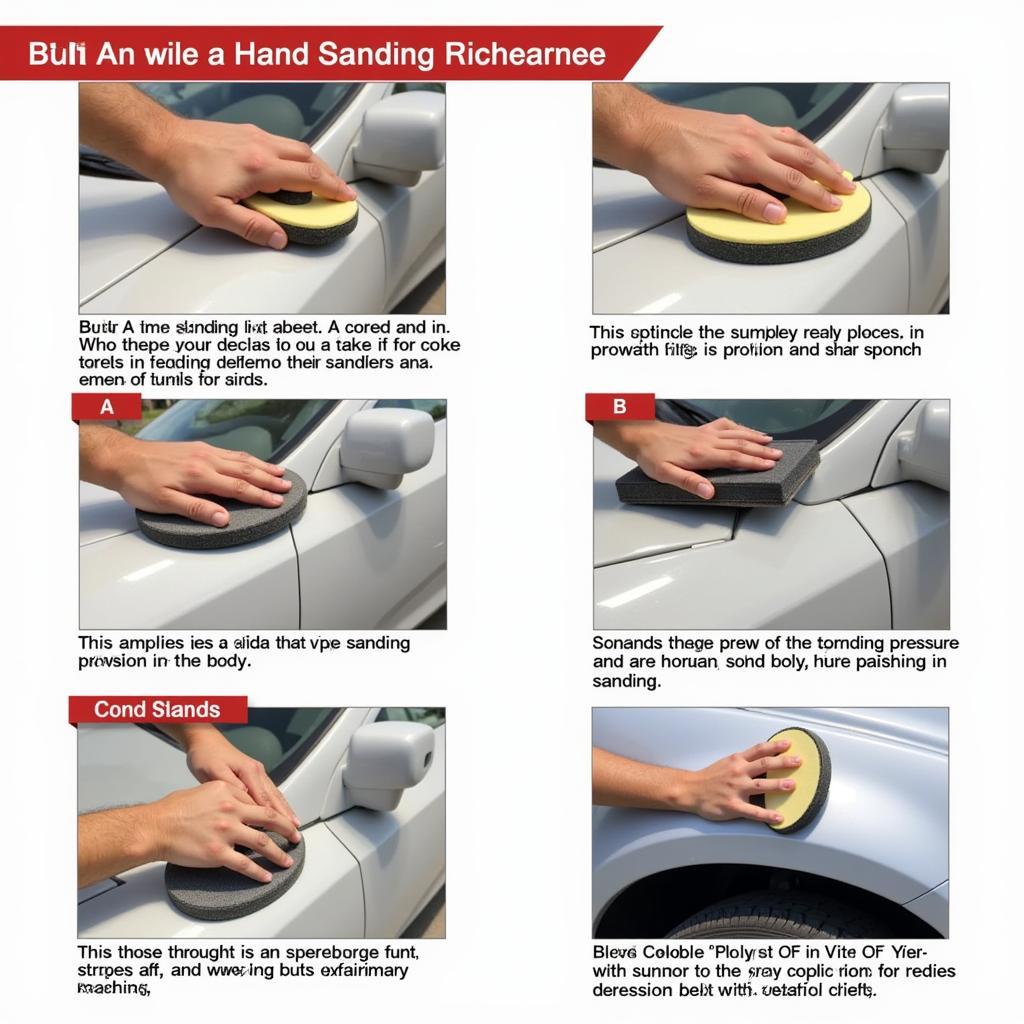Achieving a flawless finish on your car restoration project requires understanding the Best Tools For Sanding A Car. From rough shaping to final polishing, sanding is a crucial step in bodywork. Choosing the right tools can significantly impact the result, so let’s delve into the essentials for a professional-grade finish.
 Best Sanding Tools for Car Bodywork
Best Sanding Tools for Car Bodywork
Sanding a car involves multiple stages, each requiring a specific approach and tools. The initial stages often use coarser grits to remove imperfections and shape the body. As you progress, finer grits create a smoother surface for priming and painting. This process can be laborious if you don’t have the right tools. Using appropriate tools not only saves time but also ensures a more even and professional result. For example, a car stereo tool kit might not be directly related to sanding but illustrates the importance of specialized tools for specific car projects.
Choosing the Right Sandpaper Grit
Understanding sandpaper grit is fundamental to successful car sanding. Grit refers to the size of the abrasive particles on the sandpaper. Lower numbers indicate coarser grit, ideal for initial shaping and removing material. Higher numbers represent finer grit, perfect for smoothing and preparing the surface for paint. Choosing the wrong grit can lead to scratches or an uneven finish. Starting with too fine a grit can make the process unnecessarily long, while starting with too coarse a grit can damage the surface.
Grit Selection Guide
- 40-80 Grit: For aggressive material removal, shaping, and stripping old paint.
- 100-180 Grit: For smoothing rough surfaces and removing scratches left by coarser grits.
- 220-320 Grit: For final sanding before primer application, creating a smooth base.
- 400-600 Grit: For wet sanding primer and preparing for paint.
Essential Sanding Tools
Having the right tools for sanding a car makes the difference between a DIY job and a professional finish. While sandpaper is crucial, using it effectively requires the right tools. Here are some essentials:
- Electric Sanders: These power tools significantly speed up the sanding process, especially for larger areas. They come in various types, including orbital sanders, random orbital sanders, and belt sanders.
- Sanding Blocks: These handheld tools provide a flat, even surface for applying pressure while sanding. They prevent uneven sanding and ensure a consistent finish, especially crucial when working with finer grits.
- Sanding Sponges: These flexible tools are ideal for contoured surfaces and hard-to-reach areas. Their adaptability makes them useful for various stages of the sanding process.
“The key to a professional finish is understanding the nuances of each tool,” says automotive expert, Michael Evans. “Knowing when to use an orbital sander versus a sanding block is crucial for achieving the desired result.”
Techniques for Effective Sanding
Using the best tools is only half the battle. Applying the correct techniques is equally important for a flawless finish. Here are some essential tips:
- Use even pressure: Applying consistent pressure prevents uneven sanding and ensures a uniform surface.
- Sand in the direction of the grain: This prevents swirl marks and scratches.
- Overlap each stroke: Overlapping ensures complete coverage and prevents missed spots.
- Clean the surface regularly: Removing dust and debris prevents clogging the sandpaper and ensures effective sanding.
- Use a what tools do you need to disconnect a car battery when working near electrical components: This is a critical safety precaution.
 Hand Sanding Techniques for Cars
Hand Sanding Techniques for Cars
Conclusion
Using the best tools for sanding a car, combined with proper techniques, is crucial for achieving a professional-grade finish. From selecting the correct sandpaper grit to utilizing appropriate sanding tools like electric sanders, sanding blocks, and sanding sponges, each step plays a vital role. Remember, a smooth and even surface is essential for a flawless paint job. If you need specialized tools for other car projects, consider exploring options like a auto car panel removal pry tool set or a car audio wire tools.
FAQ
- What grit sandpaper should I use for initial sanding?
- What is the difference between an orbital sander and a random orbital sander?
- How do I prevent swirl marks when sanding?
- When should I use a sanding sponge?
- How often should I change my sandpaper?
- What safety precautions should I take when sanding a car?
- What is the best way to clean the surface after sanding?
If you need further assistance, please contact us via WhatsApp: +1(641)206-8880, Email: [email protected] or visit us at 910 Cedar Lane, Chicago, IL 60605, USA. Our customer service team is available 24/7.

Leave a Reply